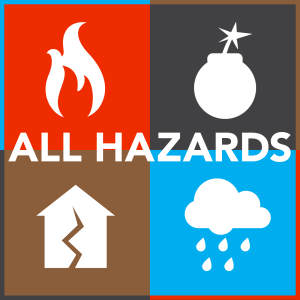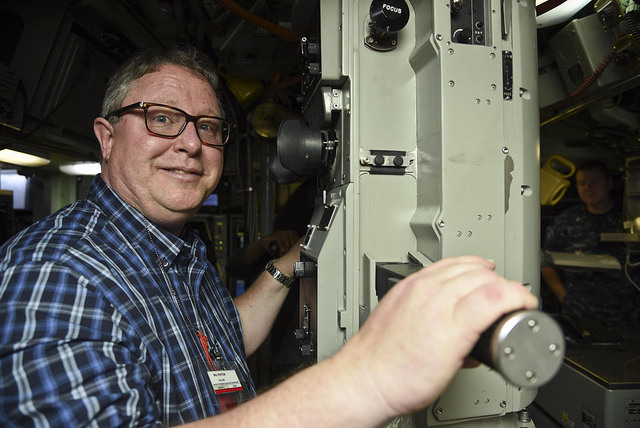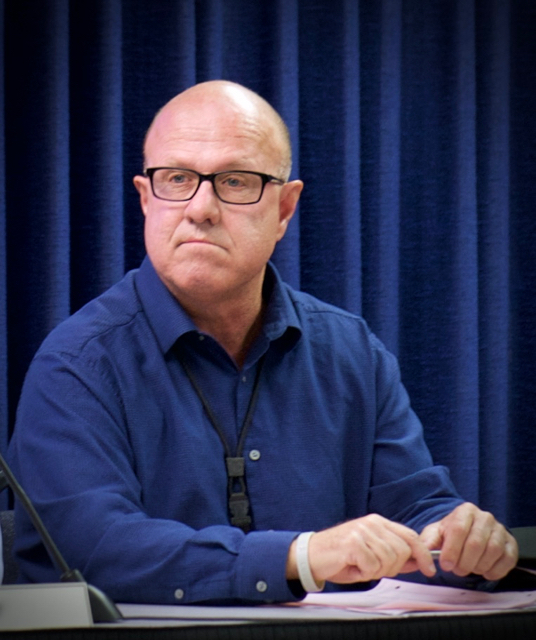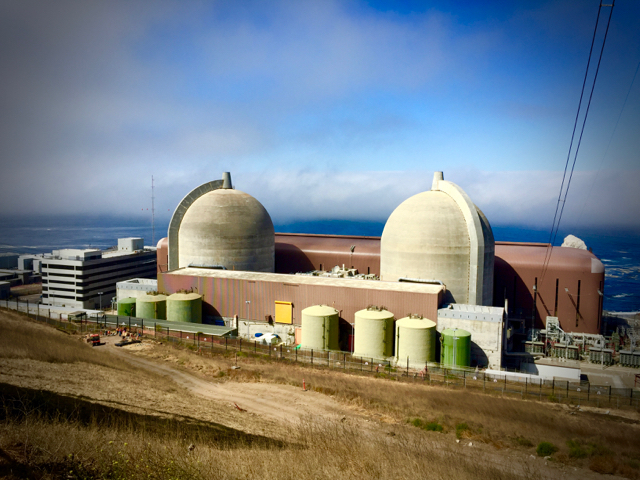Episodes

Tuesday May 09, 2017
Going Nuclear with Cal OES's Radiological Preparedness Unit
Tuesday May 09, 2017
Tuesday May 09, 2017

In this episode (28) we talk with Bill Potter, Senior Emergency Services Coordinator for the California Governor's Office of Emergency Services. He’s been with Cal OES for 15 years, all with the Radiological Preparedness Unit as lead for the Nuclear Power Plant program.
In 1979, following the accident at Three Mile Island nuclear power plant in Pennsylvania, the California State Legislature mandated that the California Office of Emergency Services (Cal OES), together with the California Department of Public Health (CDPH) and affected counties, investigate the consequences of a serious nuclear power plant accident. Based on site-specific studies in 1980, Emergency Planning Zones (EPZ) around the plant sites were established in detail and integrated plans were developed. Legislation mandating the NPP program has been continuous since 1979, enacted as Government Code and Health and Safety Code sections, called the Radiation Protection Act.
The Nuclear Power Plant (NPP) Program covers emergency planning issues related to the State’s one operating nuclear power plant – Diablo Canyon Power Plant (DCPP). The NPP program also continues coordination with one decommissioning nuclear power plant - San Onofre Nuclear Generating Station and two retired nuclear power plants - Humboldt Bay Nuclear Power Plant and Rancho Seco Nuclear Generating Station. The NPP program works with federal, state, local and utility officials in emergency planning, training and exercises to test emergency readiness. Together, through these combined preparedness efforts, the State of California provides reasonable assurance that appropriate measures can be taken to protect the health and safety of the public in the event of a radiological emergency at a nuclear power plant.
Prior to coming joining Cal OES Potter spent 20 years in the US Air Force attached to many units including AFTAC, Nuclear Detection, Collection, and Analysis. He was a seismic systems maintenance technician, Airborne Scientific Laboratory Technician (SEO), DLI Arabic Language grad, and RSO at McClellan Central Lab.
Links

Tuesday Nov 22, 2016
Radiation Ready and Zealous with Zika in SLO
Tuesday Nov 22, 2016
Tuesday Nov 22, 2016

Episode 20 was recorded on the road in San Luis Obispo during the 2016 Ingestion Pathway Exercises, a multi-day testing of state and local counties by FEMA for nuclear incidents at Diablo Canyon. We talk with Dr. Penny Borenstein, the Health Officer for the County of San Luis Obispo. She talks about how her health department and others might get involved in nuclear incidents immediately following a radiation breach. She also talks about other hot topics in SLO such as antibiotic resistance, secondary hospital-based infections, Zika virus, Valley Fever, drought, and West Nile virus.
In her position, Dr. Borenstein has been a staunch advocate for advancing the public’s health through disease control programs, health education, access to health care, and policy development. One of her first initiatives was a departmental reorganization which resulted in formation of two new divisions – Health Promotion and Health Care Services. The Health Promotion Division created a unified focus on population-based prevention. Staffed primarily at the outset with a small number of health educators and nutritionists working in Tobacco Control, WIC and Childhood Obesity Prevention, the unit now also has programs in Oral Health and Injury Prevention. The division also works extensively on community health improvement through a range of policy initiatives aimed at food systems, climate change, the built environment, and air quality.
Prior to moving to California in 2008, she held several public health leadership positions in the Mid-Atlantic region, and was the founder and Executive Director of Baltimore HealthCare Access, Inc., a non- profit agency devoted to assuring access to health care services for low income persons and special populations. A native New Yorker, Dr. Borenstein received her undergraduate degree from Cornell University and her medical degree from the State University of New York Health Science Center in Syracuse. She received her pediatrics training at the University of Connecticut in Hartford and a Master’s Degree in public health from the Johns Hopkins School of Public Health.
Links
http://www.slocounty.ca.gov/health/publichealth.htm
http://www.cdc.gov/getsmart/community/about/antibiotic-resistance-faqs.html

Tuesday Nov 08, 2016
Preparing for Diablo: The Devil's in the Details
Tuesday Nov 08, 2016
Tuesday Nov 08, 2016

For Episode #19, we traveled to San Luis Obispo County, the home to Diablo Canyon Nuclear Power Plant, where Cal OES as well as many other local, state, and federal agencies were participating in a radiological training exercise. These types of exercises are held every two years and evaluated by the Federal Emergency Management Agency (FEMA). The exercises assist in the development of emergency response plans to ensure that the health and safety of the public is protected in the event of a radiological incident.
Today’s podcast features Ron Alsop, the Emergency Services Manager for San Luis Obispo County Office of Emergency Services (OES). He has been with the county’s OES for 26 years and was previously with Cal Fire for three years. He talks about the importance of having full scales exercises and the unique challenges faced by this region.
Ron also discusses how educating the community about the nuclear power plant and how the Wireless Emergency Alert (WEA) system can assist in the event o fan emergency. He also shares an example how controlling rumors is critical during an incident, especially in this day of social media. He concludes with advice to those responsible for delivering information to the public and how transparency can help build trust.
In addition to ongoing preparedness work that includes nuclear power plant emergency readiness, Ron’s experience includes responding to incidents such as large fires throughout the state, the 6.5 San Simeon earthquake in 2003 in San Luis Obispo County, winter storms, commercial aircraft incidents, including the 2000 Alaska Airlines incident off of Ventura County,hazardous material incidents and he provided Emergency Manager’s Mutual Aid(EMMA) assistance to Cal OES in after the 1994 Northridge earthquake.
Ron served on the California statewide committee that developed the initial EMMA plan and on a statewide task force related to initial Standardized Emergency Management System (SEMS) implementation. Ron is a past chair of the California Operational Area Coalition, which is a coalition of California’s 58 county emergency managers and a former member of the California Association of Public Information Officials.

Links to additional information or resources:
San LuisObispo County Office of Emergency Services
DiabloCanyon Nuclear Power Plant

